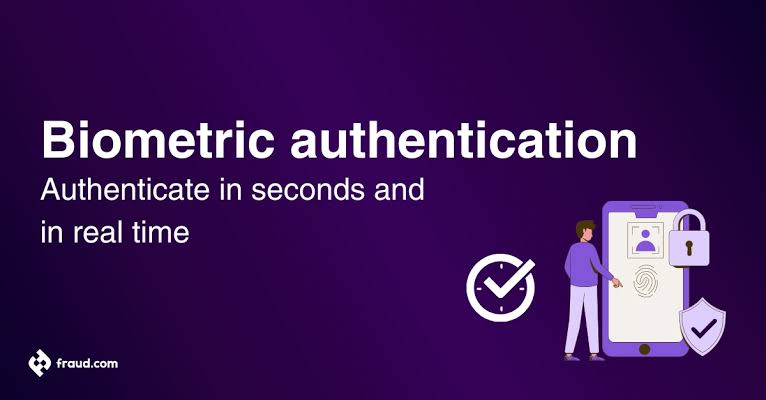Explore the top 10 biometric authentication systems, including fingerprint, facial, and iris recognition, as well as voice and vein pattern analysis. Learn about the features, benefits, and applications of each system, and discover how they enhance security and user convenience across various industries.
Top 10 Biometric Authentication Systems
Introduction
Biometric authentication systems have revolutionized security by using characteristics or behaviors to confirm identity. With the rise in digital security risks traditional approaches such as passwords and PINs are now seen as insufficient. Biometric solutions provide enhanced security and ease of use as they depend on traits that are hard to replicate or steal. This article delves into the 10 biometric authentication systems highlighting their features advantages and typical uses.
1. Fingerprint Recognition
Fingerprint recognition stands out as a popular biometric method. It operates by examining and matching the distinct ridge and valley patterns found on a persons fingertips. Advanced fingerprint sensors boast precision, capable of picking up details like minutiae points. This technology is widely integrated into devices like smartphones, laptops and security systems thanks, to its user friendliness and dependability. Additionally it plays a role in law enforcement and identity verification processes owing to its level of accuracy.
2. Facial Recognition
Facial recognition technology examines and matches characteristics of a persons face such as the spacing between their eyes, nose and mouth. Cutting edge advancements incorporate 3D scanning and machine learning techniques to improve precision and safety. This technology finds use in areas, like unlocking phones, ensuring airport security and monitoring. Nonetheless there has been scrutiny regarding facial recognition due to privacy issues and possible biases present in its algorithms.
3. Iris Recognition
Iris recognition technology scans the distinctive patterns found in the eye's colored region, known for its precision and reliability due to the consistency of iris patterns over a persons lifetime. This method utilizes light to obtain images of the iris for comparison with stored templates. It's frequently employed in settings, like government facilities and border checkpoints.
4. Voice Recognition
Voice recognition technology verifies people using their distinct vocal traits such as pitch, tone and speaking styles. By examining aspects of a voice these systems generate a voiceprint that is matched against stored voiceprints for authentication. This technology finds application in areas like phone banking, customer support and virtual assistants. However its convenience comes with drawbacks like susceptibility to imitation or interference from background sounds compromising security.
5. Hand Geometry Recognition
Hand geometry recognition involves studying and assessing the shape and size of a persons hand. It employs sensors to record measurements such as the length, width and finger size. Unlike methods like fingerprint or iris recognition which focus on unique biometric traits hand geometry relies on hand features. This technology finds application in security systems for facilities and tracking attendance in workplaces.
6. Vein Pattern Recognition
Vein pattern recognition technology utilizes light to detect and study the distinct vein patterns found in an individuals hand or finger. This approach boasts accuracy and is challenging to replicate since vein configurations are exclusive to each person and concealed beneath the skins surface. Vein pattern recognition systems are gaining traction in settings, like banks and medical facilities providing security and being less prone to complications arising from dirty or injured fingers.
7. Signature Recognition
Signature recognition technology verifies a persons identity by examining their handwriting and signature traits. This technology assesses elements like how hard they press the pen how fast they write and the way their hand moves to determine if a signature is genuine. Signature recognition finds applications in transactions, legal agreements and electronic signatures. Although it adds a level of security it may be susceptible to forgery unless used in conjunction with verification methods.
8. Gait Recognition
Gait recognition technology examines how a person walks and moves to confirm their identity. This approach employs sensors and computer vision techniques to observe and study a persons walking style. While gait recognition is in stages compared to biometric techniques it shows promise for use in surveillance and security. It provides a method for recognizing individuals from afar without any face to face contact.
9. Behavioral Biometrics
Behavioral biometrics examine how people behave through their typing speed, mouse actions and touchscreen usage. By studying these patterns systems can build a profile that reflects a persons device and app interactions. These biometrics are commonly combined with other verification methods to ensure security and identify unusual user behavior. They play a role, in preventing fraud and safeguarding online transactions.
10. DNA Recognition
DNA recognition entails examining a persons makeup for identification purposes. Although precise DNA recognition finds application in fields such as forensics and security rather than in everyday scenarios. The collection and analysis of DNA samples necessitate equipment and protocols, rendering it less feasible for use. Nonetheless it stands out as one of the biometric techniques owing to the distinctiveness of an individuals genetic blueprint.
Conclusion
Biometric authentication methods have become crucial, in ensuring security providing enhanced precision and ease of use compared to approaches. Each biometric technique like fingerprint and facial recognition or more sophisticated ones such as vein pattern and DNA recognition has its unique advantages and applications. With advancements in technology these systems are set to play a role, in safeguarding information and ensuring secure access across various fields. When choosing a biometric authentication system it's essential to take into account factors like accuracy, security, user friendliness and the specific needs of the application.
